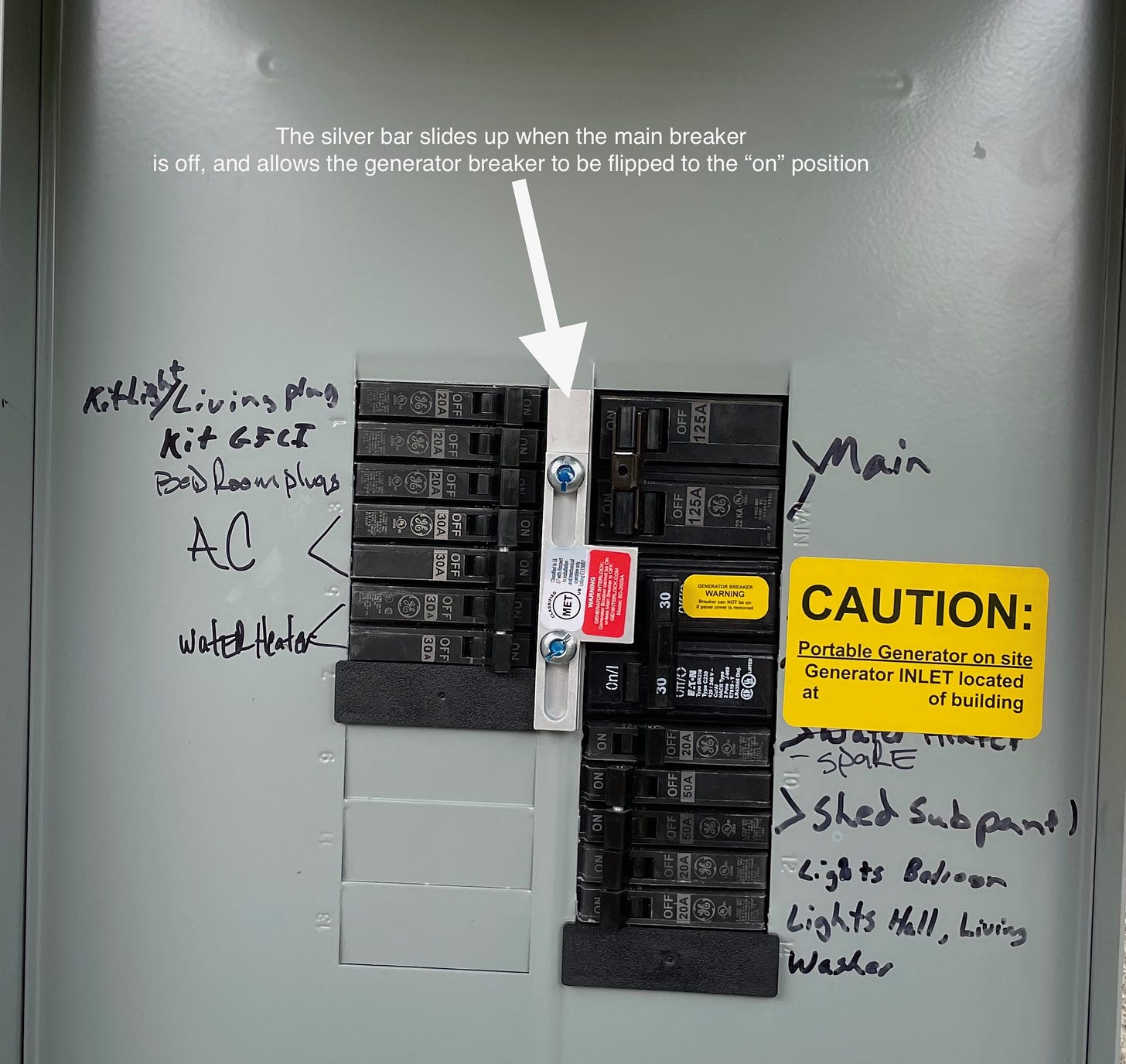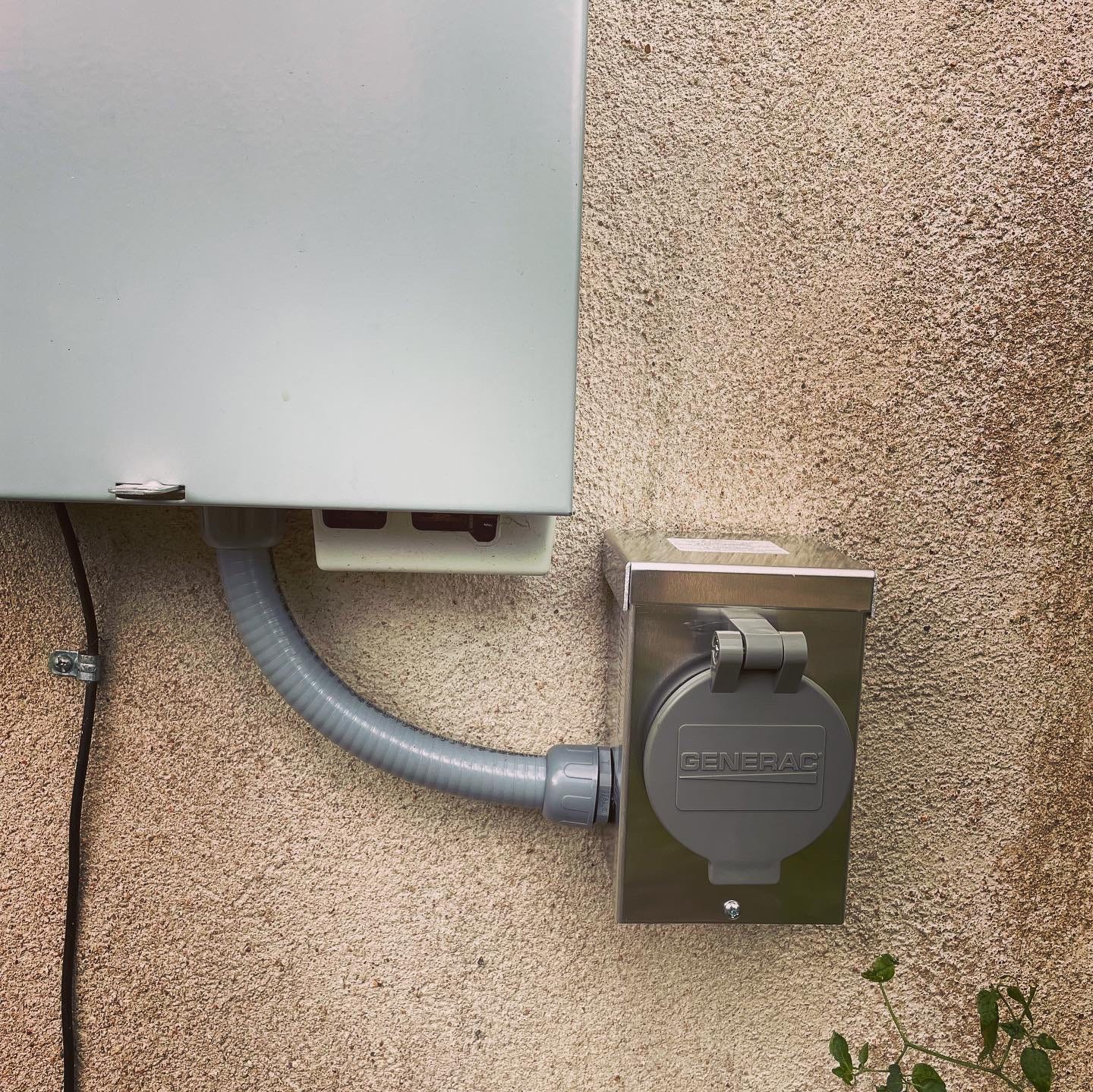In the last update, I detailed my thinking about which generator to buy. Once you have one, you’ve got to hook it up to the house. There are a couple of ways to do this. The first is to use a transfer switch, which essentially cuts over from the utility power to your backup power source. This is a nice “set it and forget it” option, especially if you have a generator or battery that starts running on its own. I’d like to set that up eventually, when my backup batteries arrive, using this nifty Eco Flow Smart Switch, but since I’m using my big gas generator for the near-term, it’s easier to start with an Interlock Kit and a Power Inlet box. As a side note, the latter set up was a lot easier to explain to my electrician than the Smart Switch. Between my naivete on electrical wiring and his conservative leanings, I may as well have been asking him to assist me in casting forbidden Wiccan spells.
Interlock Kits
Basically, you need this so that when you are powering your home with the generator, you disconnect the house from the utility’s power and create an inlet for incoming power from your generator. A mechanical device attached to the fuse panel slides up to turn off the utility power and allows you to flip the breaker that is the inlet (generator) fuse. Disconnecting your house from the utility prevents the repair people from getting electrocuted, because if you don’t this, your house’s excess electricity will flow back into the grid.
And the inlet lets you plug your generator in to your home’s power supply without running a bunch of extension cords. Plus, you can control how much power your home consumes by only turning on essential circuits in your home, like refrigerators and heat. Your local regulations may vary, but it is a possible DIY opportunity. Plenty of YouTube videos will show you how to set this up at your breaker box, redo the wiring and maneuver the fuses accordingly, or you can hire an electrician and do two things: make sure everything is up to code and functions properly, and also avoid dying or setting your house on fire if you screw up. Once again, this is a choose your own trauma situation.
Interlock Installed in Breaker Box

Inlet Box
The inlet box is where you plug in a big honking power cord from your generator to your home electrical supply.
The whole Interlock + Inlet Box project, done by an electrician, cost approximately $1,000, end to end.
Plugging it in
I’ve been slowly breaking in the motor in the generator. As of this writing, I’ve only run it for less than two hours. I’m keeping track in my log here. Once it has been run for five hours, it will be time to change the oil and put a monthly maintenance schedule together. You really don’t want to let the generator sit idle for a long period of time and then trot it out in an emergency and hope for the best. In addition to making sure there’s proper oil and that everything still runs, the electric battery that starts the engine will drain if left idle for too long.
But it is finally time to actually test it out powering the house. I’ve been gathering all the necessary equipment, like a 100 foot power cable, more oil, and five propane tanks. I think propane makes the most sense because if the apocalypse doesn’t happen, I can still grill steaks. I also threw some ear protectors into my kit bag. No point in getting hearing damage on top of everything else in a disaster.
I also made a checklist to put into the kit bag so that I don’t have to worry that I’m forgetting something in an actual emergency, and so that others could possibly set it up if I’m indisposed.
There are still some other considerations, like the fact that the generator is easily 200 pounds, so it really needs to be set up so that it’s relatively safe for others to move and set up as well.

I’m going to test it out today and report back. Not only is it a lot of work to set up and test, turning off power to the house means a lot of electronics will be blinking and need to be reset afterward, so it’s inconvenient, but necessary to test. I’m also doing it on a weekday so that I can call an electrician if something horrible happens.
Meanwhile…
While I have been doing all this work, the Eco Flow items are trickling in as well. This jolly fellow arrived recently.
ANOTHER generator! This one uses gasoline only, but will ultimately be a great addition to the Eco Flow batteries. More on that soon.
And if you’ve read this far, I want to say that I’m going to be adding a bigger perspective along with all of these tactical steps. Basically, these sort of personal fixes are of dubious value. Yes, I will be able to possibly limp along in another climate disaster, and perhaps be of help to some people in my community. But these are the band-aids of privilege that distract from the real energy and resources we collectively need to put into mitigating the absolute worst of climate change.







